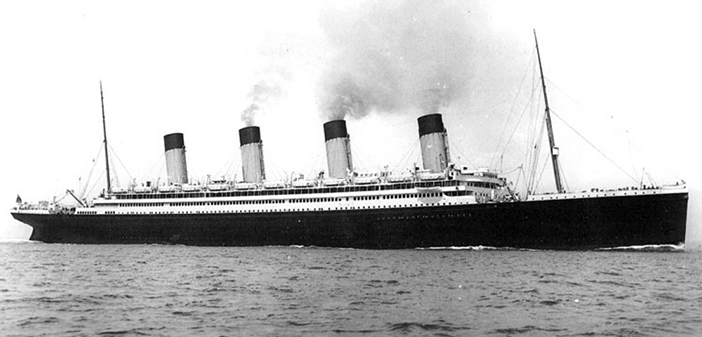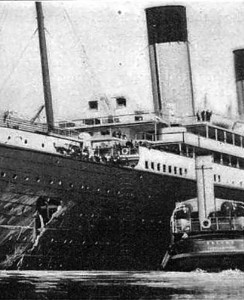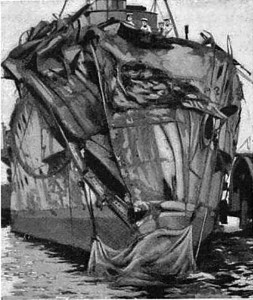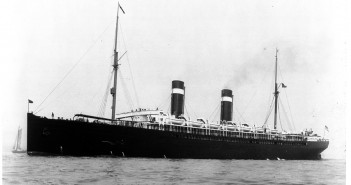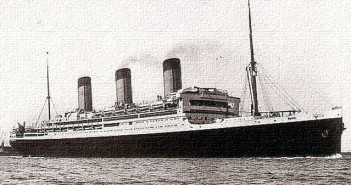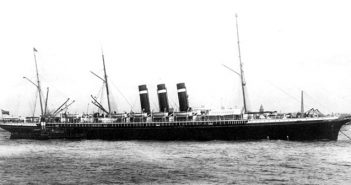Titanic’s sister ship, Olympic (1911), collided with HMS Hawke off the Isle of Wight on 20 September 1911.
The vessels were running parallel to each other on the Solent when Olympic suddenly turned to starboard, taking the cruiser’s commander—W.F. Blunt—by surprise. Hawke nearly capsized after knifing into the White Star liner, carving a pair of large holes into her hull above and below the waterline. Two of Olympic’s watertight compartments flooded, but the liner was able to return to Southampton under her own power. Hawke lost her bow in the incident, but returned to service after repairs. There were no significant casualties on either ship.
The Royal Navy blamed Olympic for the collision, claiming at an inquiry that the liner’s abrupt turn, combined with her massive displacement, created a situation that pulled Hawke into her side. White Star countered that their vessel was blameless, since Olympic was under the direct control of a harbor pilot, not her highly experienced master—Capt. Edward J. Smith—at the time of the accident. Hawke and her captain were later found to be not at fault.
The Hawke collision was a financial disaster for White Star Line. The company was forced to pay for a costly legal defense as well as for major repairs to Olympic. The company also lost the service of its flagship while the damage was being repaired.
There was a bright side, however. Despite colliding with a Royal Navy cruiser, Olympic was never in danger of sinking. Surely this must prove, White Star managers reasoned, that Olympic as well as future Olympic-class liners would be unsinkable.

Did you like this article? When you buy anything through the link below, Amazon will contribute a small amount to Oceanliners Magazine at no extra cost to you.
Shop Now

